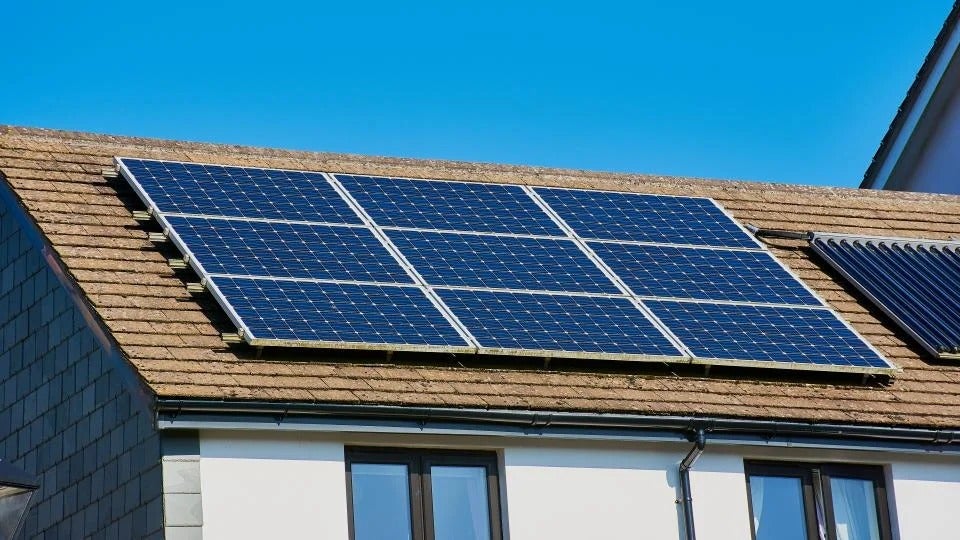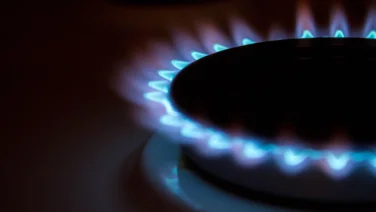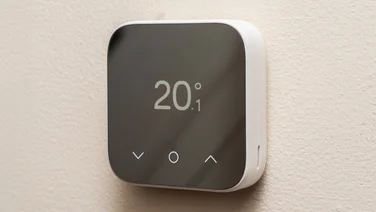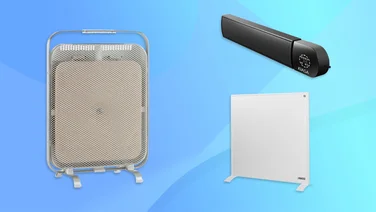To help us provide you with free impartial advice, we may earn a commission if you buy through links on our site. Learn more
- Get a free solar panel quote now
- Am I eligible for a solar panels grant?
- How do I apply for an ECO4 grant?
- What is the new ECO+ insulation grant?
- What solar panels grants can I get in Scotland?
- What other solar panel incentives does England and Wales have?
- Can I get an interest-free loan for solar panels?
- What happened to free solar panels?

There’s never been a better time to install solar panels. Energy bills have soared, solar panel costs have dropped, and environmental concerns are gathering pace. Solar panel grants aren’t quite what they used to be, but incentives haven’t disappeared completely. In this article, we’ll help you find them.
Even without government help, solar panels are an excellent investment in 2023. Electricity bills are at an all-time high and solar panel prices have dropped by 88% since 2010, meaning they pay for themselves much sooner than they used to (about seven years, at current electricity prices). No wonder installers are saying that demand has risen so fast they’re struggling to keep up.
However, a solar panel installation is still a big purchase, costing from around £5,000 for a mid-terrace house. In a recession, that’s not a bill many families can pay without help. So we’ve sought out the financial help you can get when buying solar panels, and below we’ll reveal what grants and loans you may be eligible for.
READ NEXT: The best solar panels to buy
Get a free solar panel quote now
Hoping to get a feel for how much solar panels cost? Take our quick survey below and we’ll provide a free quote for solar panel installation based on your exact needs and budget.
Am I eligible for a solar panels grant?
Solar photovoltaic (PV) panels are among the sustainable heating solutions covered by the government’s Energy Company Obligation (ECO) scheme, which aims to help low-income households stay warm. Since the scheme launched in 2013, more than 2.4 million UK homes have qualified for free and discounted measures, most commonly cavity wall insulation but also including biomass boilers and solar panels.
As the name of the scheme suggests, it obliges energy companies to improve the energy efficiency of poorly insulated homes, and you apply directly to those companies for the grant.
You will need to meet certain eligibility criteria, though. Those criteria changed slightly for the current phase of the scheme, ECO4, which replaced ECO3 in spring 2022. Here’s a quick summary of ECO4 criteria:
- Your home has an Energy Performance Certificate (EPC) of D or below;
- Your annual household income is less than £31,000;
- You receive at least one eligible benefit, such as child benefit, pension guarantee credit, JSA, income support, tax credits, universal credit or housing benefit;
- You own your own home, or have your landlord’s permission to make improvements.
Green energy solutions are given priority under ECO4. The biggest priority is given to repairing boilers and installing greener heating systems, such as heat pumps and biomass boilers, but these aren’t suitable for all homes. Solar panels are far more widely suitable, so if you qualify for help you may well be awarded a grant for a solar panels installation.
How do I apply for an ECO4 grant?
All you have to do is to contact an energy supplier that’s offering ECO4. This doesn’t have to be your own energy supplier. Suppliers offering ECO4 currently include:
British Gas | EDF | E.On | Octopus Energy | Ovo Energy | Scottish Power | So Energy
When applying, you’ll need to answer questions about your income, your benefits and your property’s energy efficiency rating. An installer will then arrange a date to visit your home and confirm whether it’s suitable for the grant. The support you receive will depend on the supplier and on your individual circumstances.
What is the new ECO+ insulation grant?
The government’s £1 billion ECO+ scheme aims to improve energy efficiency and shrink the UK’s carbon footprint by helping to fund insulation in vulnerable homes.
If your home qualifies, the funding scheme for home insulation, including cavity wall insulation and loft insulation, will help you use your energy – generated via solar panels or the grid – more efficiently.
ECO+, which starts in April 2023 and runs for three years until 2026, supports all homes with an energy performance certification (EPC) of D or below, in council tax bands A-D in England, A-E in Scotland, or A-C in Wales. So, those who don’t qualify for help under ECO4 may well qualify under ECO+.
As with ECO4, ECO+ is funded and administered by energy providers, so you apply directly to them rather than via the government.
Looking for the best deal on solar panel installation?
Find the right supplier for you
What solar panels grants can I get in Scotland?
Scotland is a little more generous than England and Wales when it comes to government funding for sustainable energy measures. Home Energy Scotland offers grants and an interest-free loan, funded by the Scottish government, for energy-saving home improvements such as solar panels.
You can now apply for domestic renewables funding of up to £1,250 that you don’t have to pay back, plus an interest-free loan up to a maximum £5,000. Loans of up to £5,000 are also available to help you fund a solar battery, which works with your solar panel system to let you store your excess energy to use later on.
The whole process of applying for grants and interest-free loans is outlined clearly on the Home Energy Scotland Funding website, where you can use the interactive tools to find out whether solar panels are suitable for you home, and how much help you can get.
READ NEXT: How long do solar panels last?
What other solar panel incentives does England and Wales have?
If you don’t live north of the border and you don’t meet the eligibility criteria for ECO4 grant, don’t despair. There are two main incentives that can save money for all users of solar panels in England and Wales:
1. Zero VAT on solar panels
In its 2022 Spring Statement, the UK government introduced a zero rate of VAT for installing energy-saving materials in residential accommodation. In March 2027, VAT goes back up to 20%. That means that if you buy now, you effectively save 20% off the pre-2022 price of installing solar panels, bringing the average cost down from around £5,000 to around £4,000. It may not be a grant, but that’s one heck of a saving.
2. The Smart Export Guarantee (SEG)
The SEG effectively pays you for any excess electricity you produce with your solar panels. If you generate more energy than you use, the excess is exported to the National Grid and you get a reduction in your bills. The scheme, which is funded by energy suppliers, is offered by medium and large suppliers with more than 150,000 domestic electricity customers. You can choose any supplier for your SEG tariff, but you’ll get a much better rate if it’s the same supplier that provides your electricity.
There’s no set rate for the SEG. The government simply says the supplier should pay more than nothing for your excess energy. The best rate you can get at the moment is 15p/kWh (kilowatt hour, the standard measure of domestic electricity), from our top-rated energy supplier Octopus Energy. In quite a distant second place are British Gas, EDF, Bulb, E.On and Scottish Power, all paying around 6p/kWh. EDF trails the pack at 1.5p/kWh. Average SEG payouts currently amount to around £85 off an annual electricity bill.
While the SEG is better than nothing, it’s not a particularly strong incentive, according to UK sustainable energy specialists The Eco Experts. “The Smart Export Guarantee is a positive development, but goes nowhere near far enough to reward solar households or encourage prospective buyers,” it says.
READ NEXT: How do solar panels work?
Can I get an interest-free loan for solar panels?
Unless you’re in Scotland, it’s unlikely that you’ll find an interest-free loan to pay for your switch to solar. Finance from banks and energy firms for solar panels tends to charge APR interest of around 9-10%, which means if you borrow £5,000 with a seven-year loan term, you’ll end up paying back about £7,000.

There are cheaper options, but they vary depending on where you live. The best deal we found was for homes in the South West, where you can you can apply for a low-interest energy efficiency loan through Lendology, a not-for-profit organisation that work with local authorities. It’s not free, but with a typical APR of 4.2% it significantly undercuts banks and energy companies.
Small businesses in Wales used to be eligible for interest-free loans for solar panels from the Energy Efficiency Loan Fund, which helped more than 700 businesses switch to renewable energy. Sadly, the scheme closed in 2021.
Looking for the best deal on solar panel installation?
Find the right supplier for you
What happened to free solar panels?
The UK government never handed out solar panels for free to anyone who wanted them. However, sustainable energy incentives used to be so generous that they created a market for free solar panels from private companies.
Here’s how it worked. The Feed In Tariff (FIT) scheme, introduced in April 2010 by the then Labour government to encourage green energy generation, predated the SEG (see above) and paid you for excess energy from your solar panels. The FIT was funded entirely by energy suppliers.
The rate was initially set at a rate of 41.3p/kWh. So if your panels generated 14kWh on a bright spring day but you only used 4kWh, your “bill” for that day would be £4.13 in credit. FIT payments from a solar panel array in a sunny spot could earn £20,000 over 25 years.
Enterprising solar companies designed a scheme that would earn them money while giving consumers free solar panels. The companies would claim the customer’s FIT payments in return for providing, installing and maintaining their solar panels for free. It really was a win-win, environmentally as well as financially.
However, the new government reined back the FIT scheme in 2012, slashing the FIT rate in 2012 to 16p/kWh, and then to 13.88p/kWh. In 2019, the scheme was closed and replaced by the current SEG, which doesn’t pay out enough to make free panels profitable.
There is a happy ending, though. Despite the end of the FIT, many UK households still benefit from it. The scheme was guaranteed for 25 years if you signed up prior to summer 2012, and 20 years if you signed up after that. That means that homes whose solar panels were installed during those heady days of free green energy can look forward to around another 15 years of cheap, green energy from the sun. Given the recent extreme increases in energy prices, they’re probably thanking their lucky stars.






